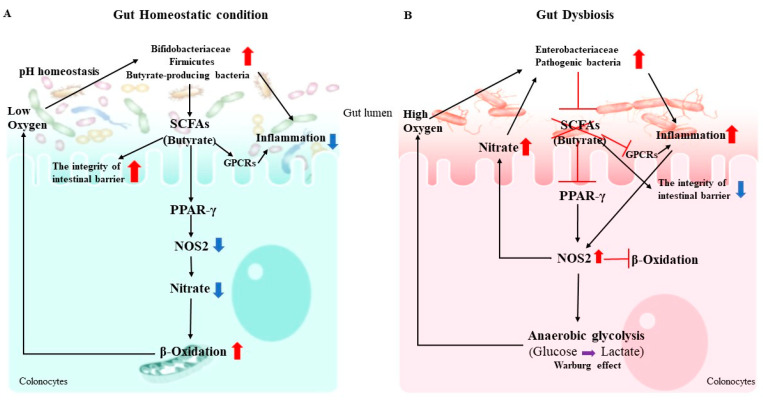Figure 1.
The interaction between microbiota-derived metabolism in the gut epithelium. (A) In the gut homeostatic condition, gut microbiota, especially butyrate-producing bacteria, converts fiber into fermentation products such as SCFAs. These SCFAs stimulate a PPAR-γ–dependent activation of mitochondrial-oxidation, thereby lowering epithelial oxygenation. SCFAs also directly bind G protein-coupled receptors (GPCRs), such as GPR41, GPR43, and GPR109A, on the surface of epithelial cells and immune cells that lead to decrease inflammation in the gut. Transport or diffusion of SCFAs into host cells results in their metabolism and/or inhibition of histone deacetylase (HDAC) activity (not shown). (B) During the gut dysbiosis, Enterobacteriaceae uses its virulence factors to trigger neutrophil transepithelial migration, which leads to a depletion of SCFA-producing bacteria, thereby lowering the luminal concentration of short-chain fatty acids such as butyrate. The consequent metabolic reprogramming of the epithelium increases the luminal bioavailability of oxygen (O2) and lactate. Arrows represent increases (red) and decreases (blue) in bacterial abundances, metabolites, and downstream effects observed in the homeostatic and dysbiotic guts.

